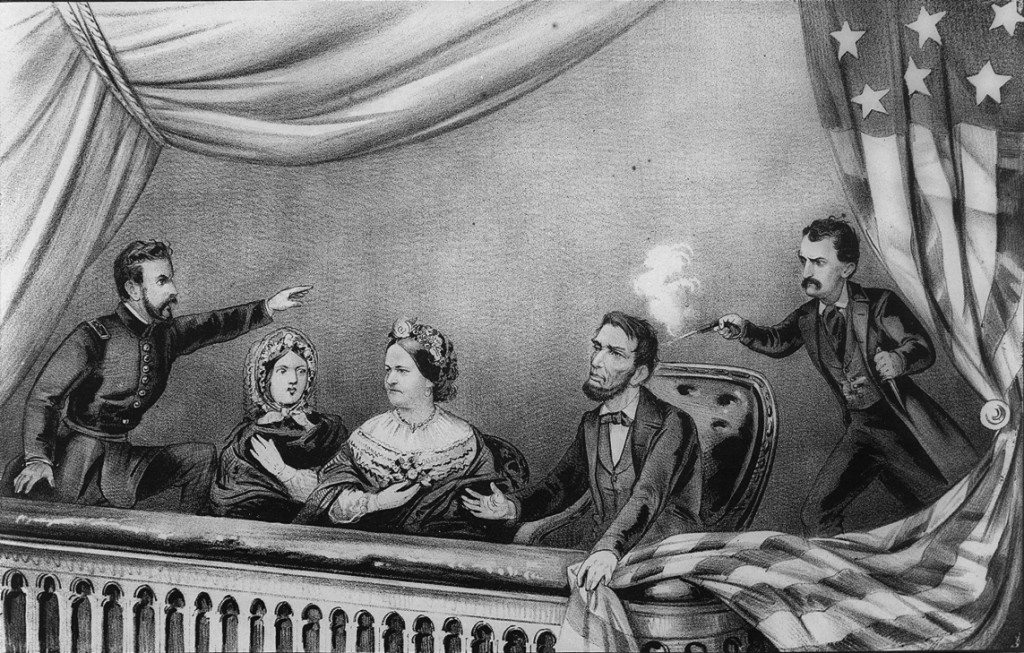One day in June 1921, the editor of the Herald newspaper in Troy, Alabama finally had enough. On his desk lay a clipping from the previous Sunday’s Brooklyn (NY) Daily Eagle. “An Assassin’s Monument,” the headline said. It had been reprinted in papers from coast to coast.
The editor angrily banged out his reply to the Eagle on a manual typewriter. “The people of our city to do not appreciate the publicity we are getting out of this thing,” he fumed.
You couldn’t blame them. After all, for 15 years the tiny town of Troy, tucked in the southeast corner of Alabama, had been stuck with a notoriety not of its own making.
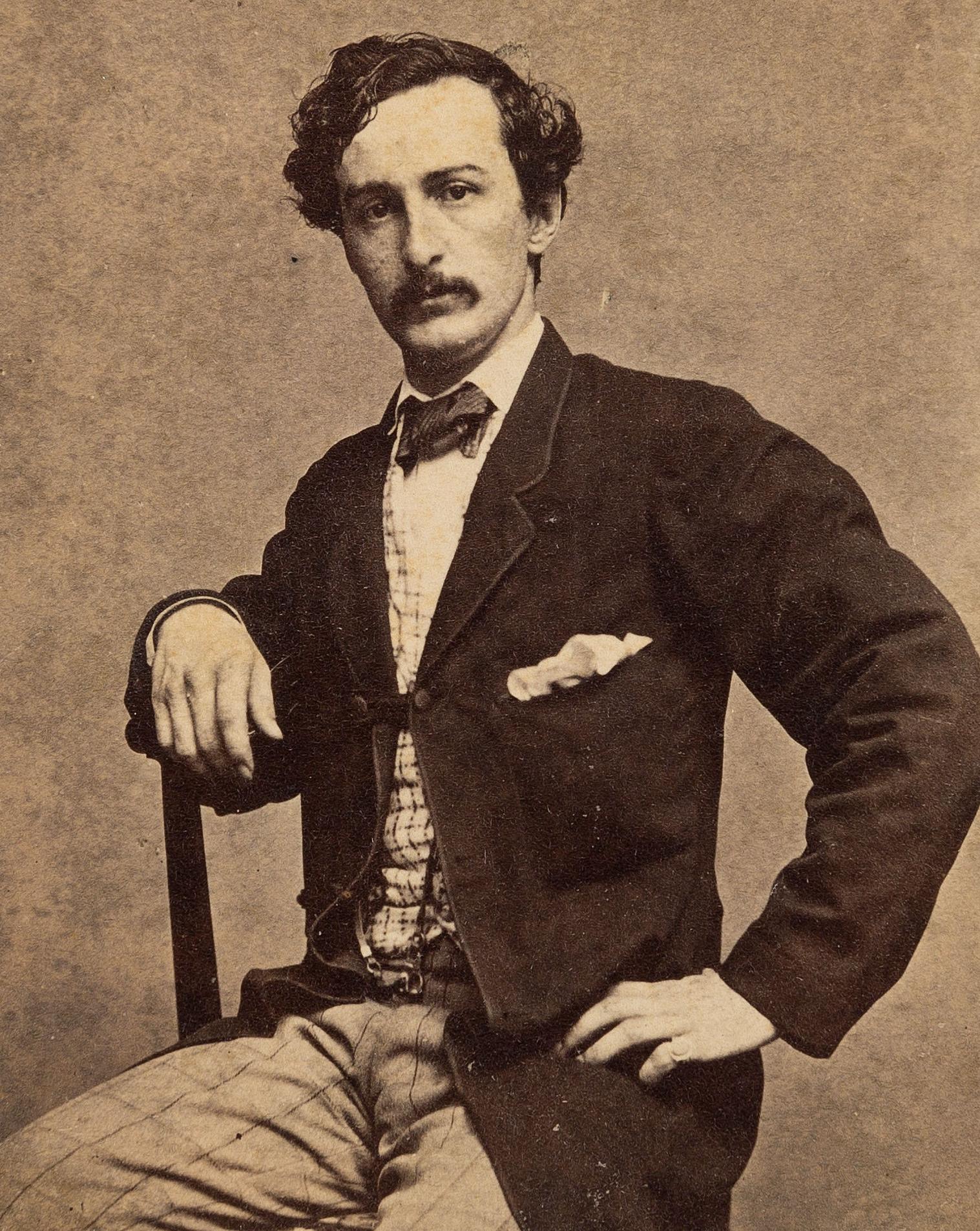 It was home to the only monument honoring a presidential assassin. And not just any president-killer, either, but the most despised villain of them all: John Wilkes Booth.
It was home to the only monument honoring a presidential assassin. And not just any president-killer, either, but the most despised villain of them all: John Wilkes Booth.
What the heck? How did that happen?
Blame it on Pink Parker.
Before we launch into his story, it’s important to understand something at the outset. Pink was not some hick backwoods redneck. He was educated, a police officer, a devout Christian, a loving husband and father, a man well-liked by his neighbors.
 With one huge exception. He had a burning hatred of Abraham Lincoln that grew into a psychotic obsession. Because he simply was unable to let go of the terrible things that had happened to his family.
With one huge exception. He had a burning hatred of Abraham Lincoln that grew into a psychotic obsession. Because he simply was unable to let go of the terrible things that had happened to his family.
His story began quietly enough. Joseph Pinkney Parker was born into a respectable family in Coffee County, Alabama in 1839. They were prosperous enough to send him to Spring Hill Academy. He had just wrapped up his studies when the War Between the States broke out. Pink put on a gray uniform and marched off with the Confederate Army.
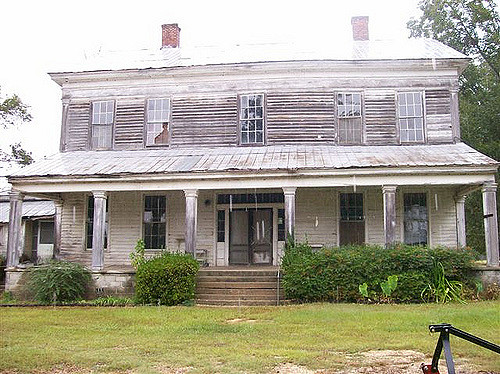 Returning home in 1865, he was trapped in the nightmare that was Reconstruction. He found the family farm overrun by weeds, its livestock gone, most of his personal property stolen, and his sister deeply embittered by the treatment she had received from Union soldiers. In a short time, the county took the place for unpaid taxes.
Returning home in 1865, he was trapped in the nightmare that was Reconstruction. He found the family farm overrun by weeds, its livestock gone, most of his personal property stolen, and his sister deeply embittered by the treatment she had received from Union soldiers. In a short time, the county took the place for unpaid taxes.
He tried being a school teacher, but had to give it up when his pupils’ parents couldn’t scrape up enough pennies to pay him. He got a job as a railroad “walker,” a guy who walked the tracks each day carrying a sledgehammer and bag of iron spikes to keep the rails in running order. It was grueling, exhausting, low-paying work.
Pink Parker gradually pulled himself up off the ground. He married and started a family. (Relatives remembered he never called wife anything but “Darling.”) He was a dedicated member of the Baptist Church. He became a police officer and eventually built a comfortable home in Troy.
But somewhere in his heart was a hurt too painful to ever heal, a cut so deep no scar could ever cover it.
 Pink Parker simply never got over what the Yankees had done to his home, his family, his future.
Pink Parker simply never got over what the Yankees had done to his home, his family, his future.
And in his mind, the blame lay entirely at one man’s feet: Abraham Lincoln.
This otherwise friendly, likable man would erupt in a volcano of hatred whenever Lincoln’s name was mentioned. In fact, the only time he ever swore was when he heard Lincoln’s name, and the torrent of obscenity was so profane he was eventually kicked out of the Baptist Church because of it.
His family and neighbors tried to overlook this single glaring flaw in an otherwise fine character. But as the years grew on, that became harder and harder to do.
Every year on April 15, the day Lincoln died, Pink would make an oversize paper sign commemorating the murder, pin it to his lapel, and wear it around town for everyone to see.
Then, in 1906, he devised an even bigger scheme. He would put up a marker honoring the very man who took Lincoln’s life … assassin John Wilkes Booth.
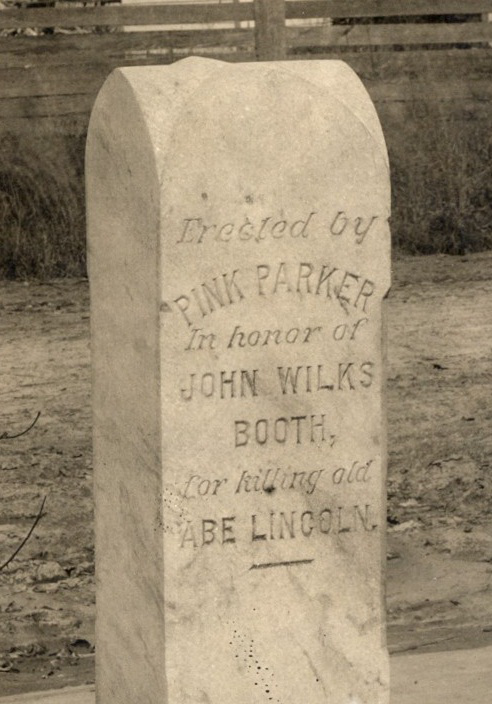 The people of Troy were horrified one day when Pink displayed a four foot tall stone marker proudly inscribed, “Erected by PINK PARKER in honor of John Wilks (sic) Booth for killing Old Abe Lincoln.”
The people of Troy were horrified one day when Pink displayed a four foot tall stone marker proudly inscribed, “Erected by PINK PARKER in honor of John Wilks (sic) Booth for killing Old Abe Lincoln.”
Pink tried to present it to the citizens of Troy, offering to set it up on the courthouse lawn or in a city park. But nobody touched it with the proverbial ten foot pole.
So Pink placed it in his own front yard. He even sent a postcard to President Theodore Roosevelt, inviting him to come down and see the monument for himself. (There was no reply from the White House.)
Pink’s house was in a quiet residential neighborhood, so not a lot of people saw the marker. Every so often a newspaper reporter in a northern state heard about the monument and would write a story about it, causing great mortification to the people of Troy. But it had been bought with private money and placed on private property, so there wasn’t much they could do about it.
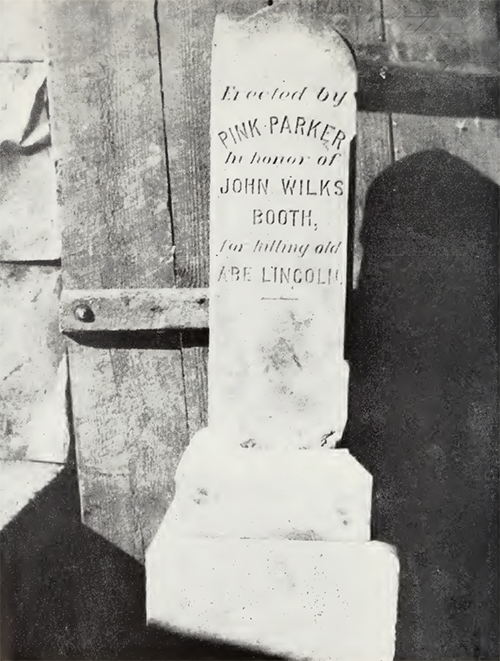 By the time 1921 rolled around, Lincoln had been dead for 56 years, and to many people the Civil War seemed as remote as the Korean War seems to us today. Pink was 82 then, nearly blind and in rapidly failing health. That October, a group of boys tipped over the Booth monument as a Halloween prank. Pink’s family didn’t put it back up.
By the time 1921 rolled around, Lincoln had been dead for 56 years, and to many people the Civil War seemed as remote as the Korean War seems to us today. Pink was 82 then, nearly blind and in rapidly failing health. That October, a group of boys tipped over the Booth monument as a Halloween prank. Pink’s family didn’t put it back up.
It was still lying in the dirt when Pink died that December.
A few months later, his sons hauled the monument to the local stone works. The writing was wiped away, replaced by Pink’s name and the dates of his birth and death. What had started out as tribute to a murderer was turned into his tombstone.
 And so it stands to this very day in a quiet corner of Oakwood Cemetery, listing to one side like the leaning Tower of Pisa. Seemingly just another innocent headstone from a century before.
And so it stands to this very day in a quiet corner of Oakwood Cemetery, listing to one side like the leaning Tower of Pisa. Seemingly just another innocent headstone from a century before.
No trace remains of the words that once reminded the world of Pink Parker’s inability to forgive and forget, to heal and move on.
Did you find this enjoyable or helpful? Please continue to join me each week, and I invite you to read Tell it Like Tupper and share your review!
Curious about Tell It Like Tupper? Here’s a chance to see for yourself. Take a sneak peek at a couple chapters in this free downloadable excerpt.

